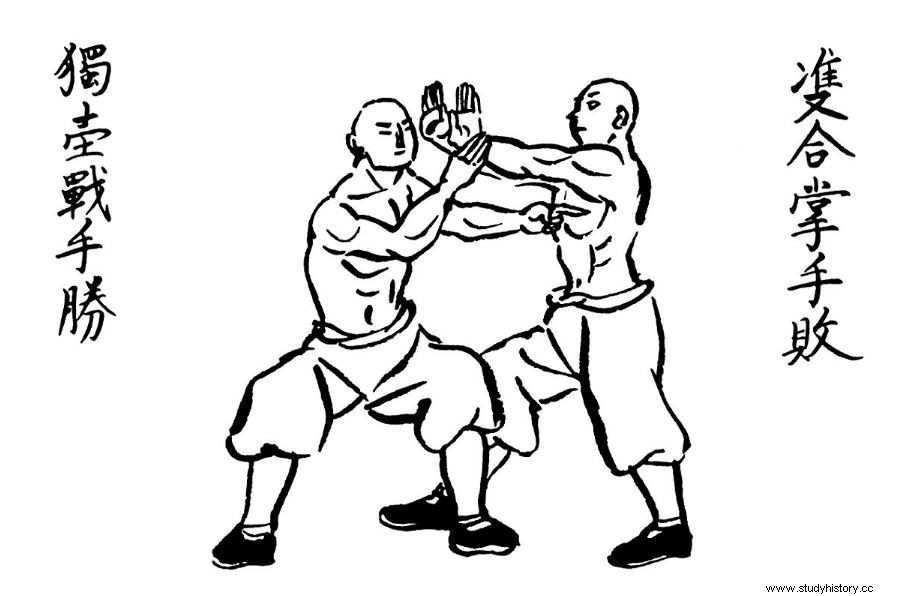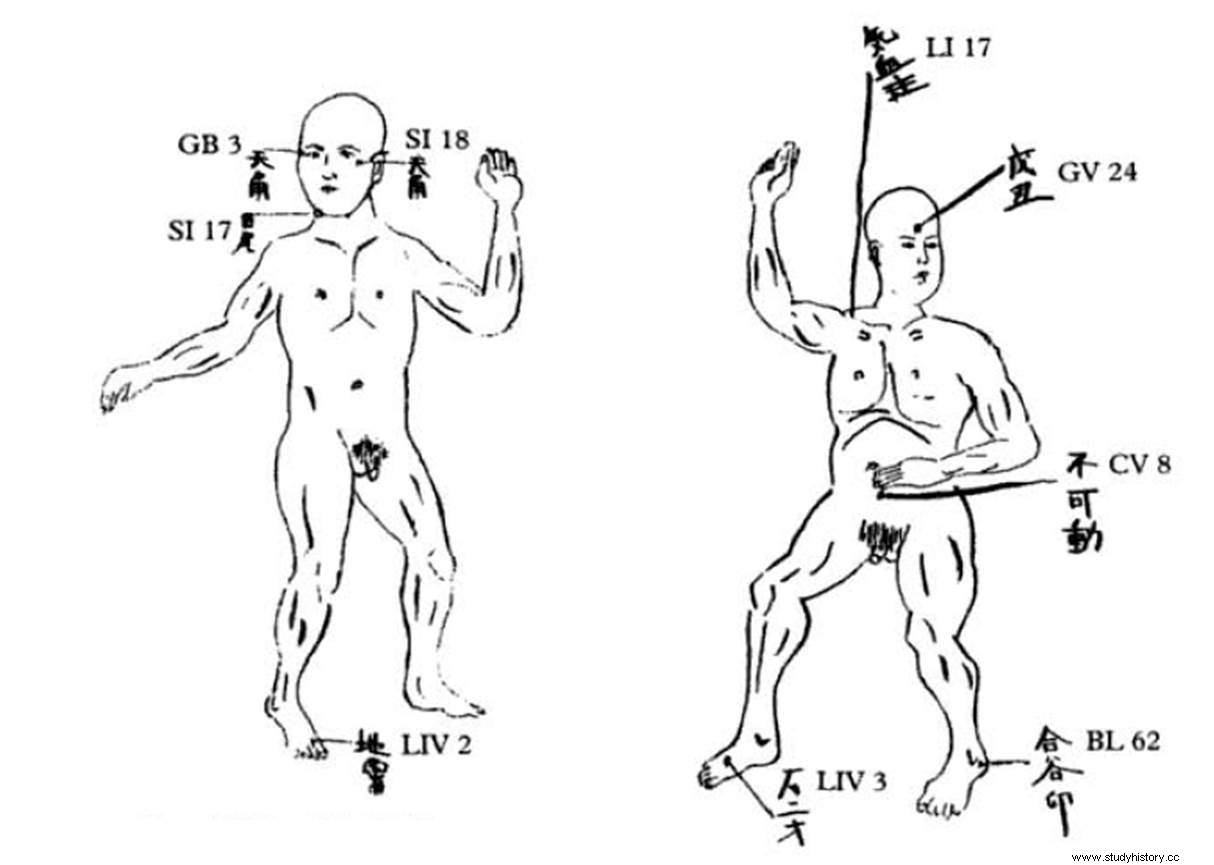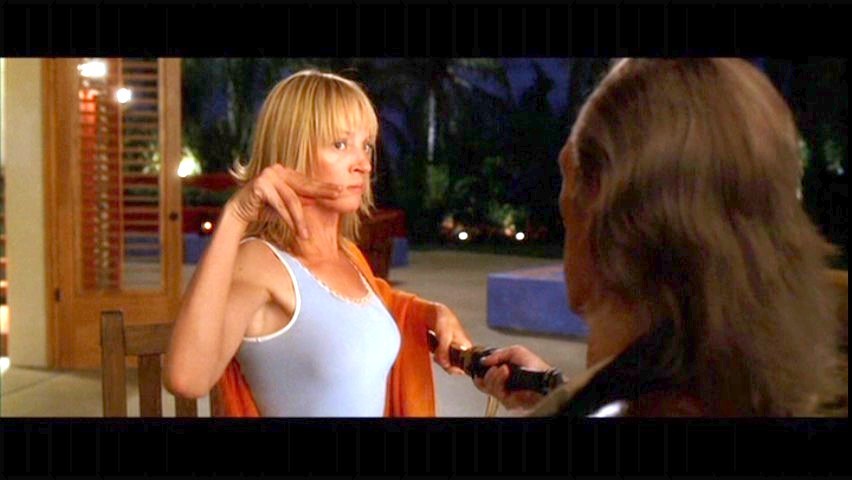As martial arts fans well know, Okinawa is the homeland of karate . Not for nothing Mr. Miyagi, the famous master of Karate Kid , he is also native to this chain of islands located halfway between China and Japan. But, beyond the geographical data, the truth is that the origins of this popular method of combat are shrouded in mystery. As a fighting style, karate shares many similarities with some forms of Chinese kung fu, so it has been speculated that, going back many generations, the original source of karate would be in Chinese martial traditions. The defenders of this theory are based on the existence of an ancient text that seems to be the philosopher's stone on which the karate we know today is based. We are talking about the Bubishi , an incunable manual of martial arts whose pages contain deadly techniques of necessity.

The story behind this legendary book and its arrival in Okinawa is worthy of the best Jackie Chan movie. Originally written in classical Chinese and in a rather cryptic style, the Bubishi It is a text surrounded by mysteries. No author or exact date of publication is known. His martial science is primarily focused on the White Crane styles. and the Monk's Fist , both derived from Shaolin kung fu. There are many theories about the origin of the Bubishi , which one more suggestive. Some say it is an occult manual, passed down from generation to generation by secret societies deep in the Okinawa jungle. Others believe that the manuscript was brought to Okinawa by Chinese refugees, fleeing the Middle Kingdom after the fall of the Ming dynasty in 1644. We will never know the truth, but all versions agree on the Chinese origin of the text.
According to the most reliable indications, the Bubishi appears in Okinawa at some point in the eighteenth century, and its martial precepts would be the basis of what was later known as karate . Without going into details about the true origin of this martial art, since here too there are theories to give and take, today few doubt the capital influence of Bubishi in their training. One of the great masters of this discipline, Kenwa Mabuni (1889 – 1952), was one of the first to reveal the mysteries of the Bubishi to the general public, although by then his teachings had already been shaping the essence of traditional karate for several centuries.
The Bubishi It is much more than a manual of fighting techniques. It is a true encyclopedia that compiles the history, philosophy and practical applications of various styles of Chinese Kung Fu. And he doesn't stay alone in the thumps and capers, no. In its pages we can find everything from devastating fist techniques to medicinal remedies, passing through basic precepts of etiquette and rules of conduct for the perfect martial artist.
But its most interesting section is perhaps the one that describes an obscure technique known as “poisonous hand ” or “touch of death ”. A lethal art known only to a few, which supposedly allows the enemy to be killed in a delayed manner. Something similar to the master stroke that Pai Mei taught Uma Thurman in the movie Kill Bill , capable of bursting a guy's heart in a matter of seconds. But, far from mystical fantasies more typical of Bruce Lee's filmography, the touch of death described in the Bubishi it seems quite realistic. It is based on precise and specific movements, on attacking certain vital points of the human body and causing a series of injuries that, in the long run, end up causing death.

Diagram with some of the vital points of the human body
The manual collects several variants of this technique, whose only difference is the time interval in which death occurs. The principle is always the same, centered on the laws of traditional Chinese medicine. If acupuncture pretends to know the internal energy flows (the famous “chi ”) that run through the body and is dedicated to unblocking them so that it flows freely, the touch of death does just the opposite. And nothing better to interrupt the flow of “chi ” than a good helping of fresh knuckles. Always according to the Bubishi, some variants of the touch of death cause death instantly, others within a few days, and some within months or even years. For those who don't want to wait too long to see their opponent fall dead, here's one of the deadliest versions, the one that kills in seven steps:
Death before a person can walk even seven steps can be caused by severe trauma to the articular artery at the bottom of the tibial joint. The superior coronary artery also serves as it passes through the subnasal groove, and the carotid artery as it passes behind the ear, in the mastoid process.

Still from the movie "Kill Bill"
In Kill Bill death came after five steps, true, but seven isn't bad either. And we have points to choose from to suit the consumer, it is not only worth shaking in a specific place on the body. Of course, the blow requires surgeon precision and good knowledge of anatomy. Except that the ancient Chinese, and later the Okinawans as well, instead of using complicated Greco-Latin terms like those described above, divided the body into a series of meridians and named each part based on its correspondence with the different animals of the Chinese zodiac. Thus, in the Bubishi original, the description of the touch of death is much more colorful. This is what oriental languages have, that we always lose juicy details in the translation.
All these techniques, both the deadly and the kindest, are explained with diagrams and in great detail in the Bubishi . Anyone interested in studying them simply has to get a copy and, if possible, a classical Chinese translator, just in case. We can't be 100 percent sure of the effectiveness of Touch of Death, but we certainly don't advise readers to try it out at home. At least not without the direct supervision of a kung fu master.
Contributed by R. Ibarzabal , from Samurai Stories
Source and images:The Bible of Karate Bubishi , translated by Patrick MacCarthy
